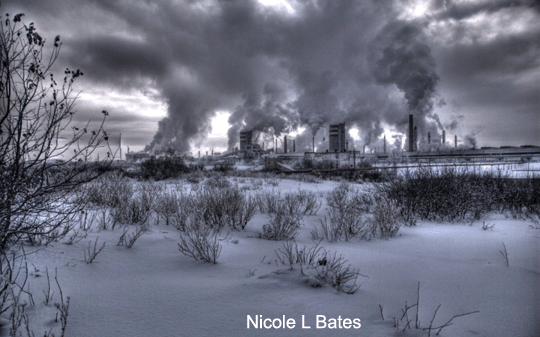A suicidal climate act – nuclear war with North Korea
Nuclear war with North Korea ‘would be suicidal’, climate experts warn, Mashable BY ANDREW FREEDMAN, 10 Aug 17, It’s winter, 2018, in Iowa, five months after the last of the nuclear bombs detonated across megacities in northeast Asia, from Seoul to Tokyo to Shanghai. Radioactive fallout was the initial concern, but now something else is going awry: the weather.
Forecasters say the corn and wheat harvest may be significantly shortened this year, and for the next several years. In fact, fears of a famine on an international scale are settling in.
This is what our world could look like just a few months to years after a regional nuclear war breaks out on the Korean Peninsula and spreads to include China and possibly Russia.
Such a war could cause the planet to cool by up to 10 degrees Celsius, or 18 degrees Fahrenheit, with larger regional swings and extremes, according to Owen Brian Toon, a scientist at the University of Colorado at Boulder. The amount of cooling could be far lower, depending on whether the conflict were more limited in scope.
Apocalyptic visions of a so-called global “nuclear winter” were popular during the Cold War when envisioning a U.S. conflict with the then-Soviet Union, but the odds of a regional nuclear war in recent times have jumped higher after President Donald Trump’s bellicose rhetoric toward North Korea on Tuesday. …….
It’s not just national security experts who are horrified by Trump’s words. Trump’s rhetoric, and history of openly considering using nuclear weapons, is also concerning to climate scientists.
Robock has conducted much of the research into the idea of a nuclear winter, whereby a global thermonuclear war vaults so much smoke into the upper atmosphere to block out the sun for years afterwards, causing temperatures to plunge and killing off vital crops and plant and animal species…….
Robock says most people, including high-ranking defense officials, are unaware that a nuclear war occurring halfway around the world from the U.S. could seriously harm the homeland, by altering the climate.
A new little ice age
Simulations in the 1980s, he said, found that temperatures would plunge so far after a U.S.-Soviet nuclear war that high temperatures in the summer temperatures would stay below freezing worldwide. ……..
The modern-day nuclear scenario that Robock, Toon and others have studied closely involves an exchange of nuclear weapons between India and Pakistan, with about 50 bombs of 15 kilotons each, which is less than half of those nations’ nuclear arsenals.
A 2007 study published in the journal Atmospheric Chemistry and Physics found that, if these weapons were aimed at the center of large cities, the direct fatalities would be “comparable to all of those worldwide in World War II.”
Such a war would induce massive firestorms in urban areas that could send up to 5 million tons of smoke high into the upper atmosphere, where tiny particles known as aerosols would scatter sunlight, preventing it from reaching the Earth’s surface.
This would turn the planet’s climate sharply colder, despite the effects of human-caused global warming, and impact areas far from the actual fighting. The global cooling from such a regional war could be near 1.25 degrees Celsius, or 2.25 degrees Fahrenheit, studies have shown.
Once in the stratosphere, the particles contributed by the smoke would stick around for a long time, Toon and Robock’s simulations show. Observations after volcanic eruptions and wildfires support the model simulations.
“It circles the globe and stays there for many years,” Toon said. ……..http://mashable.com/2017/08/09/north-korea-nuclear-war-climate-change-winter/#WoP6BE3O6iq4
No comments yet.



Leave a comment